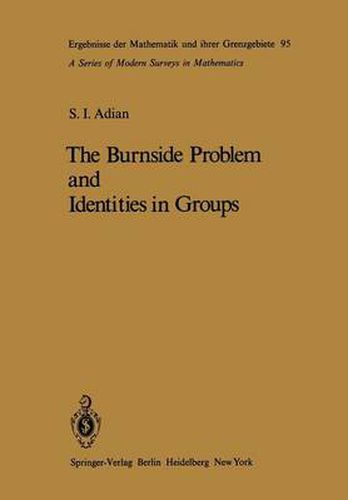Readings Newsletter
Become a Readings Member to make your shopping experience even easier.
Sign in or sign up for free!
You’re not far away from qualifying for FREE standard shipping within Australia
You’ve qualified for FREE standard shipping within Australia
The cart is loading…






This title is printed to order. This book may have been self-published. If so, we cannot guarantee the quality of the content. In the main most books will have gone through the editing process however some may not. We therefore suggest that you be aware of this before ordering this book. If in doubt check either the author or publisher’s details as we are unable to accept any returns unless they are faulty. Please contact us if you have any questions.
Three years have passed since the publication of the Russian edition of this book, during which time the method described has found new applications. In [26], the author has introduced the concept of the periodic product of two groups. For any two groups G and G without elements of order 2 and for any 1 2 odd n ~ 665, a group G @ Gmay be constructed which possesses several in 1 2 teresting properties. In G @ G there are subgroups 6 and 6 isomorphic to 1 2 1 2 G and G respectively, such that 6 and 6 generate G @ G and intersect 1 2 1 2 1 2 in the identity. This operation @ is commutative, associative and satisfies Mal'cev’s postulate (see [27], p. 474), i.e., it has a certain hereditary property for subgroups. For any element x which is not conjugate to an element of either 6 1 or 6 , the relation xn = 1 holds in G @ G * From this it follows that when 2 1 2 G and G are periodic groups of exponent n, so is G @ G * In addition, if G 1 2 1 2 1 and G are free periodic groups of exponent n the group G @ G is also free 2 1 2 periodic with rank equal to the sum of the ranks of G and G * I believe that groups 1 2
$9.00 standard shipping within Australia
FREE standard shipping within Australia for orders over $100.00
Express & International shipping calculated at checkout
This title is printed to order. This book may have been self-published. If so, we cannot guarantee the quality of the content. In the main most books will have gone through the editing process however some may not. We therefore suggest that you be aware of this before ordering this book. If in doubt check either the author or publisher’s details as we are unable to accept any returns unless they are faulty. Please contact us if you have any questions.
Three years have passed since the publication of the Russian edition of this book, during which time the method described has found new applications. In [26], the author has introduced the concept of the periodic product of two groups. For any two groups G and G without elements of order 2 and for any 1 2 odd n ~ 665, a group G @ Gmay be constructed which possesses several in 1 2 teresting properties. In G @ G there are subgroups 6 and 6 isomorphic to 1 2 1 2 G and G respectively, such that 6 and 6 generate G @ G and intersect 1 2 1 2 1 2 in the identity. This operation @ is commutative, associative and satisfies Mal'cev’s postulate (see [27], p. 474), i.e., it has a certain hereditary property for subgroups. For any element x which is not conjugate to an element of either 6 1 or 6 , the relation xn = 1 holds in G @ G * From this it follows that when 2 1 2 G and G are periodic groups of exponent n, so is G @ G * In addition, if G 1 2 1 2 1 and G are free periodic groups of exponent n the group G @ G is also free 2 1 2 periodic with rank equal to the sum of the ranks of G and G * I believe that groups 1 2